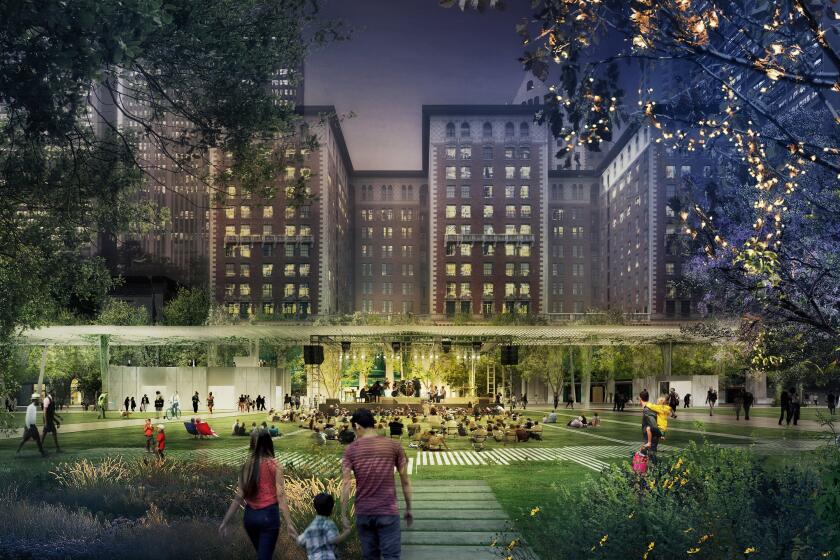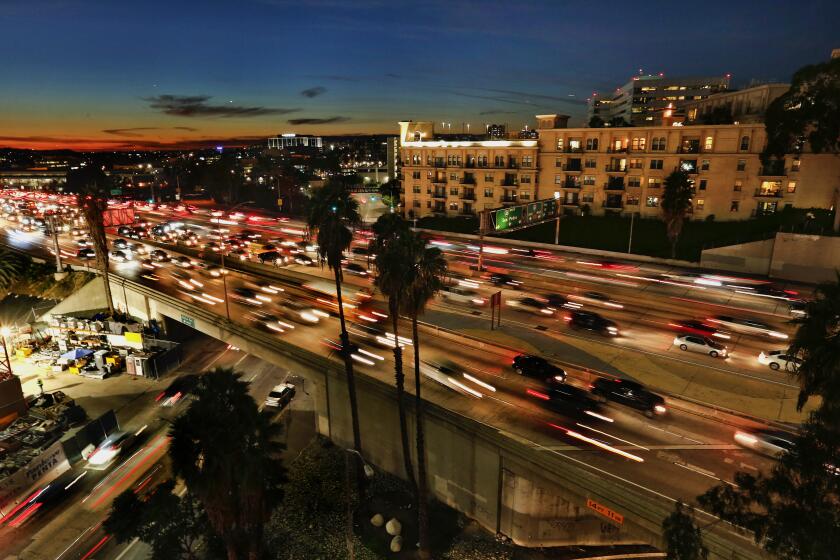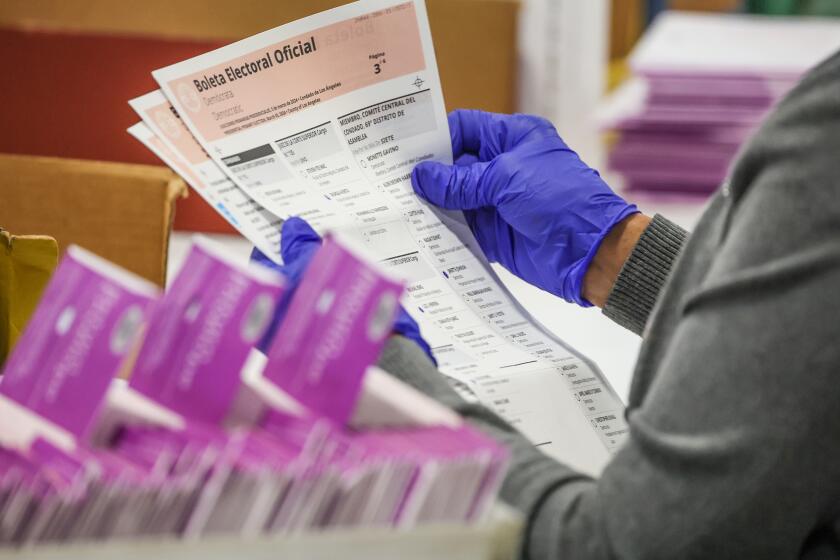Opinion: How do L.A.’s ethnic communities keep their identities while living with others? Just read the signs
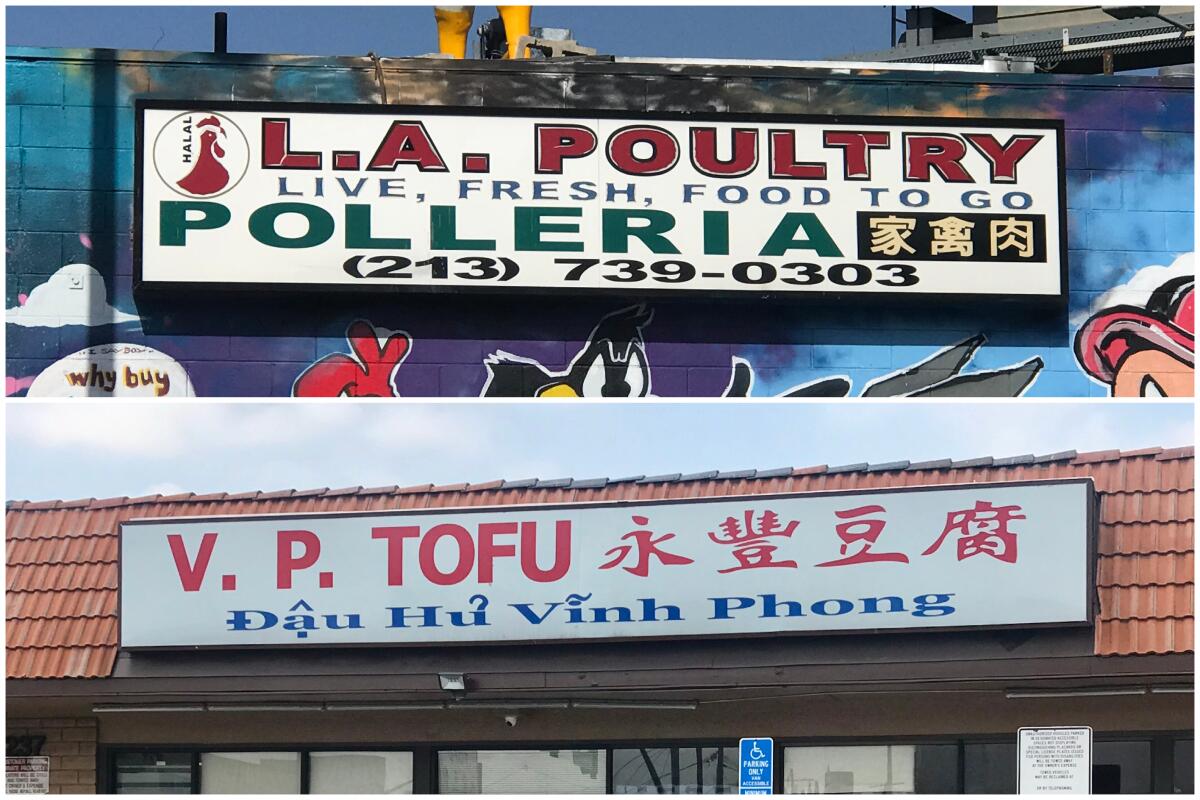
- Share via
Los Angeles’ ethnic neighborhoods are not like those in most cities around the world. We have distinctive cultural hubs specific to this or that group — Greek Americans, say, or El Salvadorans or Japanese Americans — but in most cases these hubs are overlapping, sharing space with one another. We are an active example of one answer to a key question: How should we live among people with cultural differences? Diverse communities here keep their identities but live together, not in exclusive enclaves found in many other big cities.
One unusual way to explore our patchwork cityscape is through its signage.
Angelenos are familiar with the cultural places that are officially recognized by blue signs throughout the city. They name neighborhoods such as Little Tokyo, Little Ethiopia and Little Armenia. But, there are many, many more signs around town that identify the spots and sites that draw communities together for rituals, shopping, eating and just hanging out.
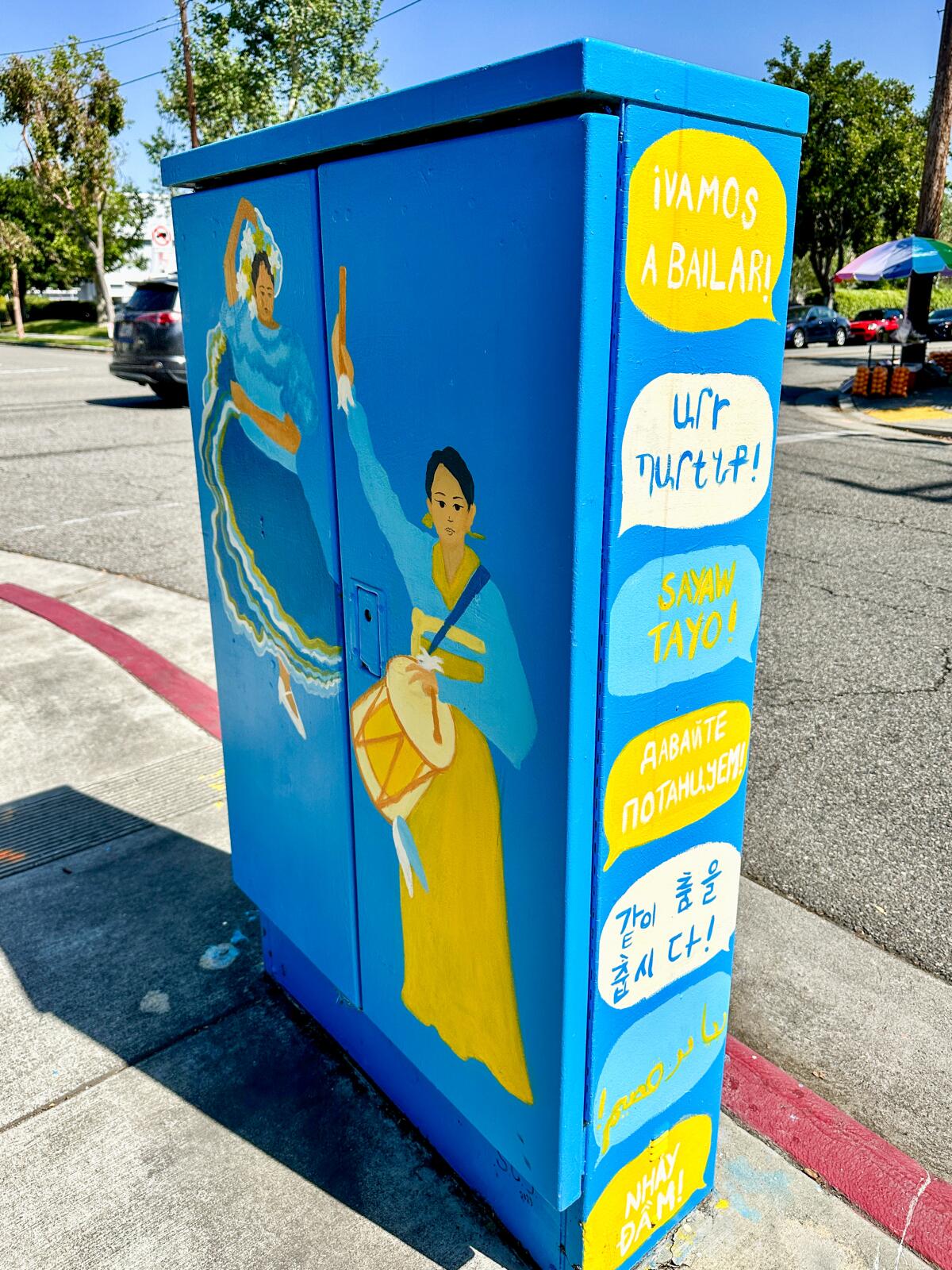
As a professor of urban planning and director of USC’s Spatial Analysis Lab, I have generated data with my team about the millions of words found throughout L.A. — on shop signs, banners, fliers, posters and elsewhere. Because there are few regulations, these signs provide a unique lens to the words and the places people choose to mark as theirs.
When we categorized the words by language and culture, we found that 97 groups were expressing their cultural identity in L.A. County. And when we mapped them, we found that 58 of the groups occupy areas where their signs are so dense that we consider the sites cultural hubs. This showed us, for example, that while L.A. has its official Chinatown downtown, it also has much larger unofficial ones in the San Gabriel Valley and suburban Rowland Heights as well as new ones forming in San Fernando Valley.
The new plans are promising, but not fully funded. And a greener, more accessible park can’t solve the bigger urban problems many downtowns face.
Significantly, the map displays what demographers have previously noted: Unlike other major American cities, L.A.’s racial and ethnic groups are more likely to encounter each other because we don’t huddle with just our own. And it’s not just that we happen to be next door to each other. We talk to each other. We found that signs on 18% of properties in L.A. contain more than one language or cultural expression. It’s not uncommon to see one sign featuring three or more languages.
Los Angeles’ sprawl allows for a multiplicity of cultures to have their own hubs, rather than a general international district such as in Seattle or the pan-Asian Flushing in New York. And given that more than 64% of Angelenos are renters and that Americans move on average 11 times within their lifetime, these hubs are crucial “third places” — locations outside of home and work that serve as community gathering spots. In many interviews with individuals about their personal geographies, it’s been common to hear accounts of people commuting, sometimes for hours, to get to their cultural places of belonging. We spoke to people who drove to Little India in Artesia from Porter Ranch or to the African American neighborhood of Leimert Park from the desert in Lancaster. They go to these lengths because cultural hubs in L.A. are specific, distinctive places that fill a human need for a place of belonging, especially given our history of gentrification and displacement.
My Mexican grandparents, Japanese grandmother and English grandfather from India became Angelenos. I try to hold on to their memories in this city.
What makes L.A. exceptional is that these cultural places are not exclusive. Our map shows they are usually interspersed. Traditionally immigrants tended to live, work and interact in ethnic enclaves that can be disconnected from the mainstream economy. The pattern we see in L.A. is one where people of different cultural backgrounds encounter and become familiar with each other.
We were not always this way. In the 1980s and 1990s for example, California wrestled with trying to stem demographic cultural change, similar to what we see today in states such as Texas and Florida. Citing the failure of the federal government to protect its border, California tried to enforce its own immigration policy with Proposition 187 and banned bilingual education with Proposition 227 . Additionally, in the 1980s, three City Council members in Monterey Park tried to declare English the official language of the city and institute English-only commercial signage ordinances in response to the growing number of Chinese Americans in San Gabriel Valley. The issue divided the city into ethnic coalitions.
We have the largest population of Native American and Indigenous peoples of any U.S. city, but we lack data on their linguistic diversity.
Similarly, in 1980, the city of Pomona responded to the growing number of Korean language signs in the area by passing an ordinance that mandated all commercial signage with non-Roman characters include English translations of equal font size. A precedent-setting lawsuit in 1989 by the Asian American Business Group resulted in the ordinance being overturned as a violation of free speech and right to association. Importantly, the U.S. District Court also pointed out that Pomona had not taken issue with signage in Italian or French, unfairly targeting non-European immigrants.
Public sentiment in Los Angeles has since changed. The presence of multiple languages is often seen as an advantage instead of a threat. Proposition 227 was effectively repealed in 2016 with the passing of Proposition 58. The growth of dual-language immersion programs has been a successful strategy for increasing enrollment in Los Angeles Unified School District and elsewhere. Parents are responding to the studies that show that learning multiple languages benefits cognitive development.
Still, across the nation, voter ballot measures at the state and city level show the ongoing debate around the role of language in our public sphere. By some counts, 32 states and more than 40 municipalities have “official English” statutes that prohibit or restrict other languages.
L.A. shows that cities don’t have to subscribe to the farce of a color-blind, melting-pot society nor to horse-trading between interest groups. Angelenos have come to understand that distinctive places of belonging are important for us all and that our futures are intertwined. Anyone here can see this — they just have to look at the signs.
Annette M. Kim is associate professor at the Roski School of Art and Design and at the Price School of Public Policy at USC.
More to Read
A cure for the common opinion
Get thought-provoking perspectives with our weekly newsletter.
You may occasionally receive promotional content from the Los Angeles Times.
